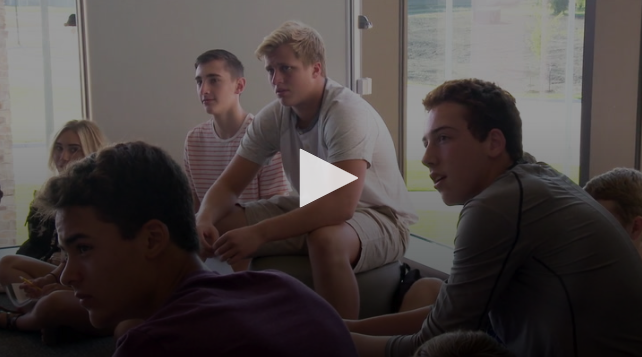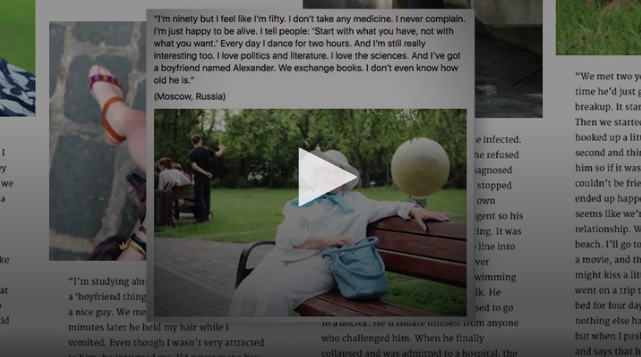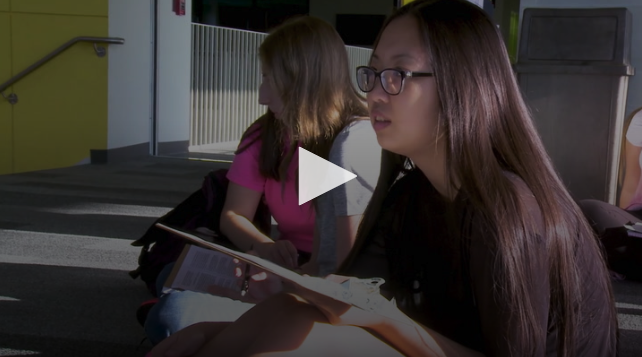Editor’s Note: This series is a great collection of genuine and productive ways of engaging kids, so that you can lay the foundation for the school year. Sarah Brown Wessling demonstrates provocative practices, making herself vulnerable with kids, so they too can feel comfortable asking questions and expressing their opinions. A beloved set of techniques from which we all can learn from and try in our own classrooms.
We hope you were able to catch the beginning of our First Days Series, where we captured those beautiful, elusive (and often awkward) first days of school. In this second batch of first day videos, we’re taking a closer look at getting comfortable being uncomfortable. Here’s why. The uncomfortable is necessary in creating culture. After all, it’s part of the shared experience. And it’s having a shared experience that helps connect people and bring them closer.
Although you may not be designing big experiences for your students at the beginning of the school year, you can start creating all the small ones. It’s those small experiences — the hand signals, the morning routine, the way you end class each day, or the way you teach your learners to encourage and engage with each other — that make the biggest difference. These are the smallest of habits that accumulate into the kind of culture your classroom will end up living. Because that’s always the hardest part, isn’t it? Not just saying what you believe or expect, but living it.
As you join us for this series, we hope you see pieces of your early days reflected in these videos. We hope you use them to help start conversations about where learning originates and the ways we can be deliberate in creating a space where it can grow. If you’ve been a long-time follower of Teaching Channel, you’ll probably recognize that the rooms I’m teaching in this year look different. They are! We moved to a new high school and I transferred from a classroom to a floating teacher, who is using other teachers’ rooms. The walls may look different than what you’re used to seeing in my videos, but the passion and purpose are as clear as ever. Enjoy!

Teaching Through Silence
Call it wait time. Call it a graceful pause. Call it uncomfortable. My first inclination is always to make it go away, replace the silence with another question or a response. But I’ve learned that if we don’t wrestle with the uncomfortable, we’ll never get to those more complex thoughts, those memorable discussions a month from now. In this video, we highlight the special kind of quiet that happens in the early days of a school year.
Give Some Snaps!
Every teacher has these; the subtle action of encouragement that becomes part of the class culture. Snapping is mine. It’s not as loud or as definitive as applause. It doesn’t disrupt or stop the learning; rather, it perpetuates it. It’s our way of saying, “I heard you. You made me think.” Like every other habit, it takes a lot of me doing it first and consistently, before the students catch on and start to freely use it as our way to witness learning.

Sharing Stories to Build Community
In this lesson, I take a nod from the incredibly compelling Humans of New York work. When I started teaching, I thought most of the relationship building was between me and the students. Now I realize it’s not only teacher-student relationships that need to be cultivated, but also the ones among students. Watch along as we use a HONY-style interview to uncover the stories of each other and start to see what connects us.

I still can’t imagine work that would be more fulfilling than watching someone else learn and grow. For all of the things that have changed along the margins of my teaching world – technology, schedules, hairstyles, social media, how I curate learning experiences, etc… – one thing is more clear than ever. For all our efforts to speed it up, quantify it, or streamline it, teaching is human work. It’s one human to another, one human at a time. In this video, I get to reflect.







